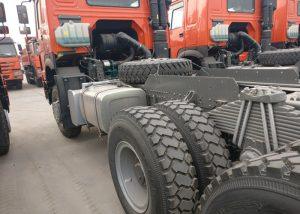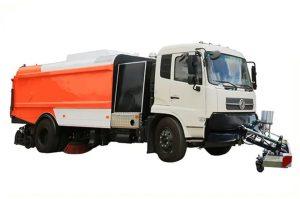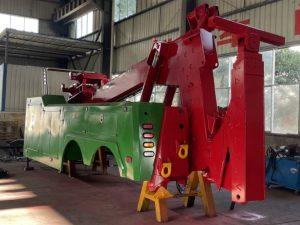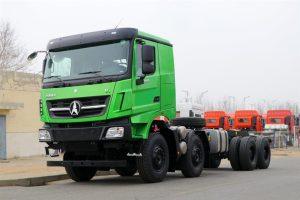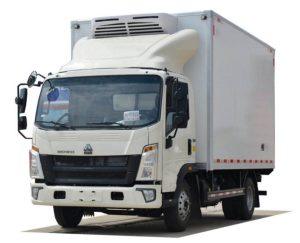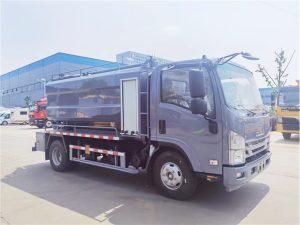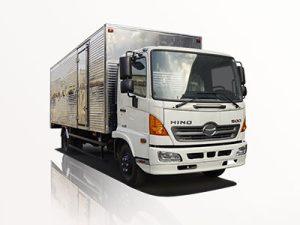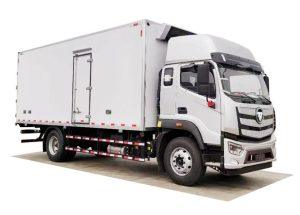Monday to Saturday - 8:00 -17:30
The Ultimate Guide to the Cab of a Truck: Understanding Features, Comfort, and Safety
Introduction
The cab of a truck is more than just a container for the driver and passengers; it is a specialized space designed to enhance comfort, safety, and efficiency during long hauls. Understanding the various components, features, and configurations of a truck cab can make a significant difference in your driving experience. Whether you are a seasoned truck driver or someone interested in the mechanics of trucks, this comprehensive article will provide valuable insights into the cab of a truck, covering everything from design features to maintenance tips.
Types of Truck Cabs
The first step in exploring the cab of a truck is to understand the different types available on the market. Each type can significantly influence comfort and functionality.
Standard Cab
A standard cab is typically the smallest option, usually featuring two doors and accommodating up to three passengers. This design maximizes cargo space in the truck bed but may compromise on interior features.
Extended Cab
The extended cab offers additional room with rear seats, making it suitable for families or additional crew members. It has an extra row of seats, often accessed via rear doors, which can be either conventional or suicide-style.
Crew Cab
The crew cab is designed for maximum passenger space, offering four full-sized doors and seating for up to six people. This is ideal for those who need to transport multiple passengers while still providing good cargo space in the bed.
Flat Roof vs. High Roof
Another important distinction in truck cabs is between flat roof and high roof models. High roof cabs provide additional vertical space, allowing for more comfortable movement inside the cab, which is especially beneficial during long hauls.
Importance of Comfort in the Cab
Driving a truck can involve long hours on the road, making comfort a crucial aspect of the cab’s design.
Seating Options
Comfortable seating enhances the driving experience significantly. Many trucks come equipped with ergonomic chairs that provide lumbar support and may be heated or cooled for additional comfort.
Cab Layout
The layout of the cab plays a vital role in comfort. Features such as ample legroom, adjustable seats, and organized dashboards can help minimize fatigue during long drives.
Climate Control
Modern truck cabs often come with advanced climate control systems, ensuring a comfortable temperature regardless of outside conditions. Look for cabs equipped with both heating and cooling options.
Noise Reduction
Noise levels in the cab are another comfort factor. Well-insulated cabs help reduce road noise, allowing for a quieter and more pleasant driving experience.
Safety Features in the Cab
Safety is paramount in vehicle design, particularly for trucks that operate in diverse and challenging conditions.
Airbags
Most modern truck cabs come equipped with airbags for both the driver and passengers, providing a critical layer of protection in the event of a collision.
Advanced Driver-Assistance Systems (ADAS)
Many new trucks are equipped with ADAS features such as lane departure warnings, adaptive cruise control, and automatic emergency braking, all of which enhance safety on the road.
Visibility Features
Large windows and well-placed mirrors provide excellent visibility for the driver, reducing the risk of accidents. Some models also offer rearview cameras to assist with parking and reversing.
Using Blind Spot Monitoring
Many cabs now come with blind spot monitoring systems that alert the driver if another vehicle is in their blind spot, which enhances overall safety.
Technology in the Truck Cab
The integration of technology has transformed the trucking industry, and the cab is at the forefront of these innovations.
Infotainment Systems
Modern truck cabs feature advanced infotainment systems that provide navigation, music, and communication capabilities. Features may include Bluetooth connectivity, touch screens, and smartphone integration.
Telematics
Telematics systems allow for the monitoring and management of vehicle performance. Fleet managers can track vehicles in real-time, monitor fuel efficiency, and receive alerts for maintenance needs.
Dash Cameras
Dash cameras have become prevalent in truck cabs, providing valuable evidence in the event of an accident and enhancing safety by discouraging risky driving behaviors.
Cab Maintenance Tips
Regular Cleaning
A clean cab not only looks good but also maintains the integrity of various components. Regularly vacuum and wipe down surfaces, and ensure that the windows are clean for optimal visibility.
Check Electrical Systems
Regularly inspect and check the electrical systems within the cab, including lights, infotainment systems, and charging ports. Any issues can be quickly addressed to avoid bigger problems later.
Inspect for Wear and Tear
Check for signs of wear and tear on seats, seat belts, and other moving parts. Addressing these issues promptly can prevent safety concerns.
Fluids and Filters
Don’t forget to check fluids such as windshield washer fluid and engine oil. Regularly replace filters to keep the cab environment clean and pollutant-free.
Cab Modifications and Customization
Many truck owners opt to customize their cabs for added comfort and style. Here are some popular modifications.
Aftermarket Seats
Replacing factory-installed seats with aftermarket options can significantly improve comfort during long journeys.
Interior Lighting
Custom lighting features, such as LED strips and adjustable cabin lights, can enhance the aesthetics of the cab and provide functional lighting during night operations.
Sound Systems
Investing in a quality sound system can make long hours on the road more enjoyable. Upgraded speakers and sound systems can provide excellent audio quality.
The Future of Truck Cabs
The trucking industry is evolving, influencing the design and technology of truck cabs.
Electric and Autonomous Trucks
As electric and autonomous trucks become more prevalent, the cab’s design will likely change. More space may be available as traditional controls become less prominent.
Enhanced Connectivity
Future cabs may feature enhanced connectivity options, enabling better communication between vehicles and infrastructure, which will improve safety and efficiency in logistics.
Sustainable Materials
There is a growing trend toward using sustainable materials in cab construction, contributing to environmental responsibility in truck manufacturing.
FAQs
What is the main purpose of the cab in a truck?
The cab serves as the driver’s workspace and living area, providing essential safety features, comfort, and storage for long-haul journeys.
How do I maintain the comfort of my truck cab?
Regular cleaning, checking seat condition, inspecting fluids, and ensuring a functional climate control system are key maintenance tasks.
Are there safety features unique to modern truck cabs?
Yes, modern cabs often include advanced safety features such as airbags, advanced driver-assistance systems, and blind spot monitoring technologies.
Can I customize my truck cab?
Absolutely! Many truck owners modify their cabs with aftermarket seats, upgraded sound systems, and custom lighting to enhance comfort and style.
What materials are used in manufacturing truck cabs?
Truck cabs are typically made from materials such as steel, aluminum, and composite materials, balancing weight, durability, and cost.
How do I choose the right cab for my needs?
Consider factors such as the number of passengers, the intended use of the truck, comfort features, and your budget when selecting a cab type.


